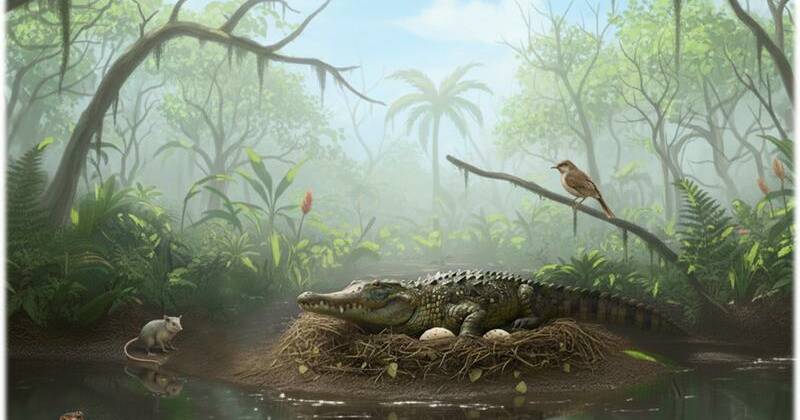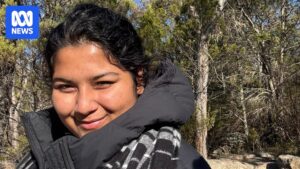
The discovery of the oldest crocodile eggshells in Australia is providing new insights into a prehistoric species that may have hunted from trees. Unearthed by scientists in clay pits near Murgon, Queensland, these shell fragments belonged to the now-extinct mekosuchine crocodiles, a group that once dominated Australia’s inland waters 55 million years ago.
The findings, made by a team from UNSW Sydney and Spain’s Miquel Crusafont Catalan Institute of Paleontology, suggest that these ancient reptiles might have been “drop crocs,” capable of leaping onto their prey from above. This behavior is reminiscent of the mythical “drop bears” of Australian folklore, often used to humorously warn newcomers about the country’s dangerous wildlife.
Uncovering the Past: The Mekosuchine Crocodiles
The mekosuchine crocodiles, identified through eggshell fragments and skulls found at the Riversleigh World Heritage Area in northwest Queensland, were a unique group possibly originating from the ancient Gondwana supercontinent. According to Professor Mike Archer from UNSW, these crocodiles were “seriously strange,” with some potentially being semi-arboreal, akin to a “leopard croc” that could ambush prey from the trees.
Unlike modern crocodiles, which arrived in Australia around 3.8 million years ago, mekosuchines faced no competition from other crocodilian species. This allowed them to occupy ecological niches similar to those of modern-day goannas, large lizards known for their tree-dwelling habits.
Scientific Analysis and Implications
The research team, including scientists from the Catalan Institute, identified the eggshell fragments as belonging to crocodilians. These fragments preserve microstructural and geochemical signals that reveal not only the type of animals that laid them but also details about their nesting and breeding behaviors.
“They preserve microstructural and geochemical signals that tell us not only what kinds of animals laid them, but also where they nested and how they bred,” Professor Archer explained.
This discovery sheds light on the diverse ecosystems that existed in prehistoric Australia, where crocodiles were a pervasive threat, roaming both land and water. The mekosuchines’ ability to thrive in such environments underscores their adaptability and the dynamic nature of ancient ecosystems.
Historical Context and Future Research
The mekosuchine crocodiles’ presence in Australia dates back to a time when the continent was part of the supercontinent Gondwana. Their extinction, which occurred millions of years before the arrival of modern crocodiles, highlights the dramatic shifts in Australia’s fauna over geological time.
Future research aims to further explore the behavioral and ecological roles of mekosuchines, potentially uncovering more about their interactions with other prehistoric species. This could provide valuable insights into the evolutionary pressures that shaped the development of modern crocodilians.
As scientists continue to study these ancient reptiles, the findings could also inform conservation strategies for current crocodile populations, offering lessons from the past to protect the biodiversity of the present.
The discovery of these ancient eggshells not only enriches our understanding of prehistoric life in Australia but also invites us to reconsider the narratives and myths that have emerged around the country’s unique wildlife. As Professor Archer noted, the idea of “drop crocs” might not be as far-fetched as it once seemed, challenging us to look at the fossil record with fresh eyes.







